My
List |
Addition Date
|
Target
|
Mission
|
Instrument
|
Size
|

|
1998-03-06 |
Jupiter
|
Galileo
|
Solid-State Imaging
|
1300x600x1 |

|
-
PIA01200:
-
Jupiter's Equatorial Region in a Methane Band (Time Set 1)
Full Resolution:
TIFF
(410.1 kB)
JPEG
(83.37 kB)
|

|
1998-03-06 |
Jupiter
|
Galileo
|
Solid-State Imaging
|
1300x600x1 |

|
-
PIA01201:
-
Jupiter's Equatorial Region in Violet Light (Time Set 1)
Full Resolution:
TIFF
(198.9 kB)
JPEG
(24.01 kB)
|

|
1998-03-06 |
Jupiter
|
Galileo
|
Solid-State Imaging
|
1300x1200x1 |

|
-
PIA01202:
-
Jupiter's Equatorial Region at 727 Nanometers (Time Set 2)
Full Resolution:
TIFF
(663.4 kB)
JPEG
(87.93 kB)
|

|
1998-03-06 |
Jupiter
|
Galileo
|
Solid-State Imaging
|
1300x600x1 |

|
-
PIA01203:
-
Jupiter's Equatorial Region at 889 Nanometers (Time Set 2)
Full Resolution:
TIFF
(388 kB)
JPEG
(62.23 kB)
|

|
1998-03-06 |
Jupiter
|
Galileo
|
Solid-State Imaging
|
1300x600x1 |
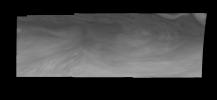
|
-
PIA01204:
-
Jupiter's Equatorial Region in Violet Light (Time Set 2)
Full Resolution:
TIFF
(193.9 kB)
JPEG
(24.83 kB)
|

|
1998-03-06 |
Jupiter
|
Galileo
|
Solid-State Imaging
|
1000x1000x1 |

|
-
PIA01205:
-
Jupiter's Equatorial Region in the Near-Infrared (Time Set 3)
Full Resolution:
TIFF
(370.4 kB)
JPEG
(55.99 kB)
|

|
1998-03-06 |
Jupiter
|
Galileo
|
Solid-State Imaging
|
1000x1000x1 |

|
-
PIA01206:
-
Jupiter's Equatorial Region in a Methane Band (Time Set 3)
Full Resolution:
TIFF
(351.7 kB)
JPEG
(48.35 kB)
|

|
1998-03-06 |
Jupiter
|
Galileo
|
Solid-State Imaging
|
900x500x1 |

|
-
PIA01207:
-
Jupiter's Equatorial Region in a Methane Band (Time Set 3)
Full Resolution:
TIFF
(198.3 kB)
JPEG
(25.75 kB)
|

|
1998-03-06 |
Jupiter
|
Galileo
|
Solid-State Imaging
|
900x500x1 |

|
-
PIA01208:
-
Jupiter's Equatorial Region in Violet Light (Time Set 3)
Full Resolution:
TIFF
(119.7 kB)
JPEG
(15.3 kB)
|

|
1998-03-06 |
Jupiter
|
Galileo
|
Solid-State Imaging
|
1300x1200x1 |

|
-
PIA01209:
-
Jupiter's Equatorial Region in the Near-Infrared (Time Set 4)
Full Resolution:
TIFF
(410.3 kB)
JPEG
(60.85 kB)
|

|
1998-03-06 |
Jupiter
|
Galileo
|
Solid-State Imaging
|
1300x1200x1 |

|
-
PIA01210:
-
Jupiter's Equatorial Region in a Methane Band (Time Set 4)
Full Resolution:
TIFF
(406.3 kB)
JPEG
(56 kB)
|

|
1998-03-26 |
Jupiter
|
Galileo
|
Near Infrared Mapping Spectrometer
|
712x725x3 |

|
-
PIA01224:
-
NIMS Observes the Structure and Composition of Jupiter's Clouds
Full Resolution:
TIFF
(33.81 kB)
JPEG
(75.03 kB)
|

|
1998-03-26 |
Jupiter
|
Galileo
|
Solid-State Imaging
|
1200x1600x1 |

|
-
PIA01227:
-
Jupiter's Southern Hemisphere in the Near-Infrared (Time Set 1)
Full Resolution:
TIFF
(903.4 kB)
JPEG
(147.8 kB)
|

|
1998-03-26 |
Jupiter
|
Galileo
|
Solid-State Imaging
|
1000x1200x1 |

|
-
PIA01228:
-
Jupiter's Southern Hemisphere in the Near-Infrared (Time Set 2)
Full Resolution:
TIFF
(721.3 kB)
JPEG
(128.5 kB)
|

|
1998-03-26 |
Jupiter
|
Galileo
|
Solid-State Imaging
|
1000x1200x1 |

|
-
PIA01229:
-
Jupiter's Southern Hemisphere in the Near-Infrared (Time Set 3)
Full Resolution:
TIFF
(648.6 kB)
JPEG
(109.9 kB)
|

|
1998-03-26 |
Jupiter
|
Galileo
|
Solid-State Imaging
|
600x600x1 |

|
-
PIA01230:
-
Motion in Jupiter's Atmospheric Vortices (Near-infrared filters)

Full Resolution:
|

|
1998-03-26 |
Jupiter
|
Galileo
|
Solid-State Imaging
|
640x485x1 |
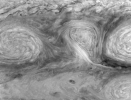
|
-
PIA01231:
-
Dynamics of Jupiter's Long-lived White Ovals

Full Resolution:
|

|
1998-04-02 |
Jupiter
|
Galileo
|
Photopolarimeter-Radiometer
|
468x604x3 |

|
-
PIA01233:
-
Photopolarimeter/Radiometer (PPR) Temperature Map of Great Red Spot
Full Resolution:
TIFF
(340.9 kB)
JPEG
(32.65 kB)
|

|
1998-04-02 |
Jupiter
|
Galileo
|
Photopolarimeter-Radiometer
|
429x585x3 |

|
-
PIA01234:
-
PPR Great Red Spot Temperature Map
Full Resolution:
TIFF
(65.49 kB)
JPEG
(30.68 kB)
|

|
1998-05-02 |
Jupiter
|
Hubble Space Telescope
|
WFPC2
|
795x900x3 |

|
-
PIA01254:
-
Hubble Provides Complete View of Jupiter's Auroras
Full Resolution:
TIFF
(1.387 MB)
JPEG
(114 kB)
|

|
1998-05-02 |
Jupiter
|
Hubble Space Telescope
|
WFPC2
|
1152x860x3 |

|
-
PIA01255:
-
Hubble Provides Infrared View of Jupiter's Moon, Ring, and Clouds
Full Resolution:
TIFF
(645.9 kB)
JPEG
(67.7 kB)
|

|
1998-05-02 |
Jupiter
|
Hubble Space Telescope
|
WFPC2
|
720x900x3 |

|
-
PIA01256:
-
Hubble Captures Volcanic Eruption Plume From Io
Full Resolution:
TIFF
(1.097 MB)
JPEG
(65.49 kB)
|

|
1998-05-02 |
Jupiter
|
Hubble Space Telescope
|
WFPC2
|
2069x2489x3 |

|
-
PIA01257:
-
Hubble Images Reveal Jupiter's Auroras
Full Resolution:
TIFF
(6.679 MB)
JPEG
(483.2 kB)
|

|
1998-05-02 |
Jupiter
|
Hubble Space Telescope
|
WFPC2
|
720x600x1 |

|
-
PIA01258:
-
Rare Hubble Portrait of Io and Jupiter
Full Resolution:
TIFF
(305.8 kB)
JPEG
(28.52 kB)
|

|
1998-05-02 |
Jupiter
|
Hubble Space Telescope
|
WFPC2
|
850x490x3 |

|
-
PIA01259:
-
Hubble Views the Galileo Probe Entry Site on Jupiter
Full Resolution:
TIFF
(993.4 kB)
JPEG
(64.05 kB)
|

|
1998-05-02 |
Jupiter
|
Hubble Space Telescope
|
WFPC2
|
800x600x3 |

|
-
PIA01260:
-
Hubble Discovers Bright New Spot on Io
Full Resolution:
TIFF
(604.4 kB)
JPEG
(33.67 kB)
|

|
1998-05-02 |
Jupiter
|
Hubble Space Telescope
|
WFPC2
|
600x700x3 |

|
-
PIA01261:
-
Hubble Gallery of Jupiter's Galilean Satellites
Full Resolution:
TIFF
(527.3 kB)
JPEG
(44.81 kB)
|

|
1998-05-02 |
Jupiter
|
Hubble Space Telescope
|
WFPC2
|
800x800x3 |

|
-
PIA01262:
-
Hubble Tracks Jupiter Storms
Full Resolution:
TIFF
(1.085 MB)
JPEG
(40.51 kB)
|

|
1998-05-02 |
Jupiter
|
Hubble Space Telescope
|
WFPC2
|
750x700x3 |

|
-
PIA01263:
-
Jupiter G Impact Evolution
Full Resolution:
TIFF
(752.8 kB)
JPEG
(31.92 kB)
|

|
1998-05-02 |
Jupiter
|
Hubble Space Telescope
|
WFPC2
|
830x568x3 |

|
-
PIA01264:
-
Evolution of the P/Shoemaker-Levy 9 "Gang of Four" Region
Full Resolution:
TIFF
(543.5 kB)
JPEG
(69.45 kB)
|

|
1998-05-02 |
Jupiter
|
Hubble Space Telescope
|
WFPC2
|
800x600x1 |

|
-
PIA01265:
-
Month-long Evolution of the D/G Jupiter Impact Sites from Comet P/Shoemaker-Levy 9
Full Resolution:
TIFF
(226.8 kB)
JPEG
(54.55 kB)
|

|
1998-05-02 |
Jupiter
|
Hubble Space Telescope
|
WFPC2
|
600x854x1 |

|
-
PIA01266:
-
Jupiter's Upper Atmospheric Winds Revealed in Ultraviolet Images by Hubble Telescope
Full Resolution:
TIFF
(239.6 kB)
JPEG
(62.37 kB)
|

|
1998-05-02 |
Jupiter
|
Hubble Space Telescope
|
WFPC2
|
800x600x3 |

|
-
PIA01267:
-
Hubble Space Telescope Resolves Volcanoes on Io
Full Resolution:
TIFF
(357 kB)
JPEG
(40.59 kB)
|

|
1998-09-21 |
Jupiter
|
Voyager
|
ISS - Narrow Angle
|
600x992x3 |

|
-
PIA01324:
-
Jupiter
Full Resolution:
TIFF
(299.6 kB)
JPEG
(21.53 kB)
|

|
1999-01-08 |
Jupiter
|
Voyager
|
VG ISS - Narrow Angle
|
400x400x3 |

|
-
PIA01353:
-
Jupiter
Full Resolution:
TIFF
(185.9 kB)
JPEG
(9.675 kB)
|

|
1998-12-05 |
Jupiter
|
Voyager
|
VG ISS - Narrow Angle
|
916x901x3 |

|
-
PIA01369:
-
Jupiter from Voyager 2
Full Resolution:
TIFF
(1.809 MB)
JPEG
(68.65 kB)
|

|
1998-12-05 |
Jupiter
|
Voyager
|
VG ISS - Narrow Angle
|
800x920x3 |

|
-
PIA01370:
-
Jupiter's Great Red Spot
Full Resolution:
TIFF
(1.251 MB)
JPEG
(49.61 kB)
|

|
1998-11-04 |
Jupiter
|
Voyager
|
VG ISS - Narrow Angle
|
400x400x3 |

|
-
PIA01371:
-
Voyager Picture of Jupiter
Full Resolution:
TIFF
(152.4 kB)
JPEG
(8.968 kB)
|

|
1998-12-05 |
Jupiter
|
Voyager
|
VG ISS - Narrow Angle
|
5489x4637x3 |

|
-
PIA01384:
-
Jupiter's Great Red Spot
Full Resolution:
TIFF
(76.36 MB)
JPEG
(3.275 MB)
|

|
1998-10-14 |
Jupiter
|
Galileo
Hubble Space Telescope
|
|
850x950x3 |

|
-
PIA01477:
-
Jupiter's White Ovals
Full Resolution:
TIFF
(648.3 kB)
JPEG
(32.09 kB)
|

|
1998-10-30 |
Jupiter
|
Voyager
|
|
2081x1654x3 |

|
-
PIA01481:
-
Jupiter System Montage
Full Resolution:
TIFF
(4.652 MB)
JPEG
(148.9 kB)
|

|
1998-12-07 |
Jupiter
|
Galileo
|
Photopolarimeter-Radiometer
|
1500x2571x3 |

|
-
PIA01496:
-
Jovian Dark Spot
Full Resolution:
TIFF
(2.798 MB)
JPEG
(143.5 kB)
|

|
1999-03-13 |
Jupiter
|
Voyager
|
VG ISS - Narrow Angle
|
400x400x3 |

|
-
PIA01509:
-
Jupiter Full Disk with Great Red Spot
Full Resolution:
TIFF
(274.6 kB)
JPEG
(11.19 kB)
|

|
1999-03-13 |
Jupiter
|
Voyager
|
VG ISS - Narrow Angle
|
865x692x3 |

|
-
PIA01512:
-
Jupiter's Great Red Spot and White Ovals
Full Resolution:
TIFF
(1.188 MB)
JPEG
(68.23 kB)
|

|
1999-03-13 |
Jupiter
|
Voyager
|
VG ISS - Narrow Angle
|
919x837x3 |

|
-
PIA01513:
-
Jupiter - Southeast of Great Red Spot
Full Resolution:
TIFF
(1.426 MB)
JPEG
(79.63 kB)
|

|
1999-03-13 |
Jupiter
|
Voyager
|
VG ISS - Narrow Angle
|
581x915x3 |

|
-
PIA01518:
-
Jupiter Plume
Full Resolution:
TIFF
(1.083 MB)
JPEG
(42.3 kB)
|

|
1999-03-13 |
Jupiter
|
Voyager
|
VG ISS - Narrow Angle
|
487x559x3 |

|
-
PIA01519:
-
Disturbed Region West of the Great Red Spot
Full Resolution:
TIFF
(403.2 kB)
JPEG
(17.82 kB)
|

|
1999-03-13 |
Jupiter
|
Voyager
|
VG ISS - Narrow Angle
|
937x910x3 |

|
-
PIA01521:
-
Jupiter White Oval
Full Resolution:
TIFF
(1.655 MB)
JPEG
(72.53 kB)
|

|
1999-03-23 |
Jupiter
|
Voyager
|
VG ISS - Narrow Angle
|
862x831x3 |
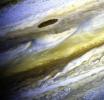
|
-
PIA01524:
-
Jupiter's Equatorial Zone in Exaggerated Color
Full Resolution:
TIFF
(1.733 MB)
JPEG
(84.04 kB)
|

|
1999-06-22 |
Jupiter
|
Voyager
|
|
1362x1228x3 |

|
-
PIA01527:
-
Jupiter's Violent Storms
Full Resolution:
TIFF
(5.036 MB)
JPEG
(126.3 kB)
|

|
1999-08-24 |
Jupiter
|
Hubble Space Telescope
|
WFPC2
|
2401x2870x3 |

|
-
PIA01593:
-
Hubble Views Ancient Storm in the Atmosphere of Jupiter - Montage
Full Resolution:
TIFF
(14.35 MB)
JPEG
(423.5 kB)
|

|
1999-08-24 |
Jupiter
|
Hubble Space Telescope
|
WFPC2
|
718x716x3 |

|
-
PIA01594:
-
Hubble Views Ancient Storm in the Atmosphere of Jupiter - Full Disk
Full Resolution:
TIFF
(1.127 MB)
JPEG
(30.32 kB)
|

|
1999-08-24 |
Jupiter
|
Hubble Space Telescope
|
WFPC2
|
321x321x3 |

|
-
PIA01595:
-
Hubble Views Ancient Storm in the Atmosphere of Jupiter - May, 1992
Full Resolution:
TIFF
(306.5 kB)
JPEG
(13.83 kB)
|

|
1999-08-24 |
Jupiter
|
Hubble Space Telescope
|
WFPC2
|
321x321x3 |
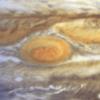
|
-
PIA01596:
-
Hubble Views Ancient Storm in the Atmosphere of Jupiter - July, 1994
Full Resolution:
TIFF
(301.3 kB)
JPEG
(12.4 kB)
|

|
1999-08-24 |
Jupiter
|
Hubble Space Telescope
|
WFPC2
|
321x321x3 |

|
-
PIA01597:
-
Hubble Views Ancient Storm in the Atmosphere of Jupiter - August, 1994
Full Resolution:
TIFF
(285.2 kB)
JPEG
(10.9 kB)
|

|
1999-08-24 |
Jupiter
|
Hubble Space Telescope
|
WFPC2
|
321x321x3 |

|
-
PIA01598:
-
Hubble Views Ancient Storm in the Atmosphere of Jupiter - February, 1995
Full Resolution:
TIFF
(218.9 kB)
JPEG
(9.833 kB)
|

|
1999-08-24 |
Jupiter
|
Hubble Space Telescope
|
WFPC2
|
321x321x3 |

|
-
PIA01599:
-
Hubble Views Ancient Storm in the Atmosphere of Jupiter - October, 1995
Full Resolution:
TIFF
(245 kB)
JPEG
(9.032 kB)
|

|
1998-06-10 |
Jupiter
|
Galileo
|
Solid-State Imaging
|
900x900x3 |
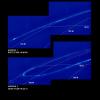
|
-
PIA01600:
-
Time Series of Jupiter's Aurora
Full Resolution:
TIFF
(773.5 kB)
JPEG
(61.78 kB)
|

|
1998-06-10 |
Jupiter
|
Galileo
|
Solid-State Imaging
|
900x950x3 |

|
-
PIA01601:
-
Time Series of Jupiter's Aurora
Full Resolution:
TIFF
(976.6 kB)
JPEG
(83.63 kB)
|

|
1998-06-10 |
Jupiter
|
Galileo
|
Solid-State Imaging
|
900x950x3 |

|
-
PIA01602:
-
Time Series of Jupiter's Aurora
Full Resolution:
TIFF
(1.121 MB)
JPEG
(91.86 kB)
|

|
1998-06-10 |
Jupiter
|
Galileo
|
Solid-State Imaging
|
900x900x3 |

|
-
PIA01603:
-
Time Series of Jupiter's Aurora
Full Resolution:
TIFF
(820.7 kB)
JPEG
(73.32 kB)
|

|
1998-10-13 |
Jupiter
|
Galileo
|
Solid-State Imaging
|
880x620x3 |

|
-
PIA01636:
-
Changing Lightning Storms on Jupiter
Full Resolution:
TIFF
(84.96 kB)
JPEG
(37.34 kB)
|

|
1998-10-13 |
Jupiter
|
Galileo
|
Solid-State Imaging
|
1152x855x1 |

|
-
PIA01638:
-
Jovian Lightning and the Daytime Storm
Full Resolution:
TIFF
(188.1 kB)
JPEG
(89.44 kB)
|

|
1998-10-13 |
Jupiter
|
Galileo
|
Solid-State Imaging
|
592x537x3 |
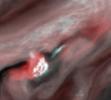
|
-
PIA01639:
-
Water Cloud Thunderstorm Northwest of Great Red Spot
Full Resolution:
TIFF
(621.9 kB)
JPEG
(19.42 kB)
|

|
1998-12-07 |
Jupiter
|
Galileo
|
Solid-State Imaging
|
900x900x3 |

|
-
PIA01650:
-
Historic Merger of Storms on Jupiter
Full Resolution:
TIFF
(1.153 MB)
JPEG
(75.13 kB)
|

|
1999-03-18 |
Jupiter
|
Galileo
|
Solid-State Imaging
|
640x485x1 |

|
-
PIA01651:
-
Dynamics after Historic Merger of Storms on Jupiter

Full Resolution:
|

|
1999-04-15 |
Jupiter
|
Galileo
|
Solid-State Imaging
|
640x485x1 |

|
-
PIA01655:
-
Dynamics of Jupiter's Long-lived White Ovals

Full Resolution:
|

|
1999-08-27 |
Jupiter
|
Galileo
|
Solid-State Imaging
|
1300x1200x3 |

|
-
PIA02097:
-
Cloud Features North of Jupiter's Equator
Full Resolution:
TIFF
(2.356 MB)
JPEG
(87.9 kB)
|

|
1999-08-27 |
Jupiter
|
Galileo
|
Solid-State Imaging
|
2200x1200x3 |

|
-
PIA02098:
-
Clouds and Hazes of Jupiter's Southern Hemisphere
Full Resolution:
TIFF
(3.798 MB)
JPEG
(163.1 kB)
|

|
2000-04-06 |
Jupiter
|
Voyager
|
VG ISS - Narrow Angle
|
260x260x1 |

|
-
PIA02257:
-
Voyager 2 Jupiter Eruption Movie

Full Resolution:
|

|
2000-04-06 |
Jupiter
|
Voyager
|
VG ISS - Narrow Angle
|
213x160x1 |
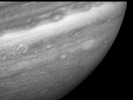
|
-
PIA02258:
-
Voyager 1 Jupiter Southern Hemisphere Movie

Full Resolution:
|

|
2000-04-06 |
Jupiter
|
Voyager
|
VG ISS - Narrow Angle
|
318x240x1 |

|
-
PIA02259:
-
Voyager 1 Red Spot Movie

Full Resolution:
|

|
1999-08-24 |
Jupiter
|
Hubble Space Telescope
|
WFPC2
|
321x321x3 |

|
-
PIA02400:
-
Hubble Views Ancient Storm in the Atmosphere of Jupiter - October, 1996
Full Resolution:
TIFF
(219.7 kB)
JPEG
(9.823 kB)
|

|
1999-08-24 |
Jupiter
|
Hubble Space Telescope
|
WFPC2
|
321x321x3 |

|
-
PIA02401:
-
Hubble Views Ancient Storm in the Atmosphere of Jupiter - April, 1997
Full Resolution:
TIFF
(217.3 kB)
JPEG
(10.36 kB)
|

|
1999-08-24 |
Jupiter
|
Hubble Space Telescope
|
WFPC2
|
321x321x3 |

|
-
PIA02402:
-
Hubble Views Ancient Storm in the Atmosphere of Jupiter - June, 1999
Full Resolution:
TIFF
(258.3 kB)
JPEG
(11.79 kB)
|

|
2000-10-26 |
Jupiter
|
Galileo
|
Near Infrared Mapping Spectrometer
|
2769x1542x3 |

|
-
PIA02569:
-
Ammonia Ice near Jupiter's Great Red Spot
Full Resolution:
TIFF
(7.819 MB)
JPEG
(148.5 kB)
|

|
2000-10-05 |
Jupiter
|
Cassini-Huygens
|
ISS - Narrow Angle
|
633x635x1 |

|
-
PIA02666:
-
Cassini "First-Look" Images of Jupiter
Full Resolution:
TIFF
(52.08 kB)
JPEG
(10.67 kB)
|

|
2000-10-23 |
Jupiter
|
Cassini-Huygens
|
ISS - Narrow Angle
|
528x522x3 |

|
-
PIA02821:
-
Jupiter's Great Red Spot in Cassini Image
Full Resolution:
TIFF
(222.3 kB)
JPEG
(11.32 kB)
|

|
2000-10-23 |
Jupiter
|
Cassini-Huygens
|
ISS - Narrow Angle
|
750x250x1 |
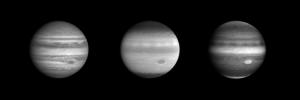
|
-
PIA02822:
-
Jupiter in blue, ultraviolet and Near Infrared
Full Resolution:
TIFF
(42.75 kB)
JPEG
(8.874 kB)
|

|
2000-10-23 |
Jupiter
|
Hubble Space Telescope
|
WFPC2
|
693x485x1 |

|
-
PIA02823:
-
Oval Storms Merging on Jupiter
Full Resolution:
TIFF
(223.6 kB)
JPEG
(43.14 kB)
|

|
2000-11-06 |
Jupiter
|
Cassini-Huygens
|
ISS - Narrow Angle
|
1377x1377x3 |

|
-
PIA02825:
-
Nine Frames as Jupiter Turns
Full Resolution:
TIFF
(2.757 MB)
JPEG
(100.6 kB)
|

|
2000-11-06 |
Jupiter
|
Cassini-Huygens
|
ISS - Narrow Angle
|
889x859x1 |
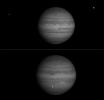
|
-
PIA02826:
-
Jupiter and Europa in Near Infrared
Full Resolution:
TIFF
(196.3 kB)
JPEG
(21.13 kB)
|

|
2000-11-21 |
Jupiter
|
Cassini-Huygens
|
ISS - Narrow Angle
|
400x400x1 |
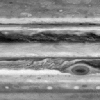
|
-
PIA02829:
-
Red Spot Movie

Full Resolution:
|

|
2000-11-21 |
Jupiter
|
Cassini-Huygens
|
ISS - Narrow Angle
|
400x400x1 |

|
-
PIA02830:
-
Still from Red Spot Movie
Full Resolution:
TIFF
(65.11 kB)
JPEG
(16.28 kB)
|

|
2000-11-21 |
Jupiter
|
Cassini-Huygens
|
ISS - Narrow Angle
|
400x400x1 |

|
-
PIA02831:
-
Processed Movie of Zonal Jets

Full Resolution:
|

|
2000-11-21 |
Jupiter
|
Cassini-Huygens
|
ISS - Narrow Angle
|
400x400x1 |

|
-
PIA02832:
-
Still from Processed Movie of Zonal Jets
Full Resolution:
TIFF
(60.02 kB)
JPEG
(15.09 kB)
|

|
2000-12-06 |
Jupiter
|
Cassini-Huygens
|
ISS - Narrow Angle
|
559x553x3 |

|
-
PIA02837:
-
Eyeing Ganymede
Full Resolution:
TIFF
(469.3 kB)
JPEG
(29.86 kB)
|

|
2000-12-06 |
Jupiter
|
Cassini-Huygens
|
ISS - Narrow Angle
|
400x520x1 |

|
-
PIA02838:
-
Northern Belt of Jupiter
Full Resolution:
TIFF
(145 kB)
JPEG
(29.71 kB)
|

|
2000-12-12 |
Jupiter
|
Cassini-Huygens
|
Imaging Science Subsystem
|
400x400x1 |

|
-
PIA02850:
-
Movie of High Clouds on Jupiter

Full Resolution:
|

|
2000-12-12 |
Jupiter
|
Cassini-Huygens
|
Imaging Science Subsystem
|
400x400x1 |

|
-
PIA02851:
-
Still from High-Clouds Jupiter Movie
Full Resolution:
TIFF
(49.46 kB)
JPEG
(8.516 kB)
|

|
2000-12-12 |
Jupiter
|
Cassini-Huygens
|
Imaging Science Subsystem
|
863x629x3 |
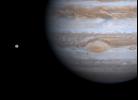
|
-
PIA02852:
-
Jupiter Eye to Io
Full Resolution:
TIFF
(854.8 kB)
JPEG
(42.31 kB)
|

|
2000-12-19 |
Jupiter
|
Voyager
|
VG ISS - Narrow Angle
|
213x160x1 |

|
-
PIA02855:
-
Voyager 1 "Blue Movie"

Full Resolution:
|

|
2000-12-19 |
Jupiter
|
Cassini-Huygens
|
Imaging Science Subsystem
|
1001x888x3 |
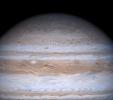
|
-
PIA02856:
-
High Latitude Mottling on Jupiter
Full Resolution:
TIFF
(2.031 MB)
JPEG
(119.8 kB)
|

|
2000-12-21 |
Jupiter
|
Cassini-Huygens
|
Imaging Science Subsystem
|
317x487x1 |

|
-
PIA02859:
-
Jupiter's Main Ring and 2 Satellites
Full Resolution:
TIFF
(126.6 kB)
JPEG
(33.26 kB)
|

|
2000-12-20 |
Jupiter
|
Cassini-Huygens
|
Imaging Science Subsystem
|
1020x986x3 |

|
-
PIA02860:
-
Io in Front of Jupiter
Full Resolution:
TIFF
(1.728 MB)
JPEG
(56.76 kB)
|

|
2000-12-21 |
Jupiter
|
Cassini-Huygens
|
Imaging Science Subsystem
|
846x1016x3 |

|
-
PIA02861:
-
Europa and Callisto under the Watchful Gaze of Jupiter
Full Resolution:
TIFF
(728 kB)
JPEG
(31 kB)
|

|
2000-12-23 |
Jupiter
|
Cassini-Huygens
|
Imaging Science Subsystem
|
747x731x3 |

|
-
PIA02862:
-
Ganymede and Jupiter
Full Resolution:
TIFF
(732.8 kB)
JPEG
(26.34 kB)
|

|
2000-12-28 |
Jupiter
|
Cassini-Huygens
|
Imaging Science Subsystem
|
1799x600x3 |

|
-
PIA02863:
-
Planetwide Color Movie

Full Resolution:
|

|
2000-12-27 |
Jupiter
|
Cassini-Huygens
|
Imaging Science Subsystem
|
1799x600x3 |

|
-
PIA02864:
-
Still from Planetwide Movie
Full Resolution:
TIFF
(2.582 MB)
JPEG
(81.28 kB)
|

|
2000-12-29 |
Jupiter
|
Cassini-Huygens
|
Imaging Science Subsystem
|
1027x924x1 |

|
-
PIA02865:
-
Jupiter Clouds in Depth
Full Resolution:
TIFF
(742.9 kB)
JPEG
(135.7 kB)
|

 Planetary Data System
Planetary Data System





















































































































